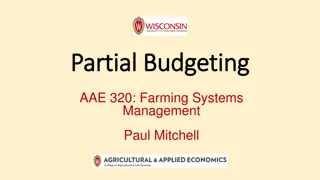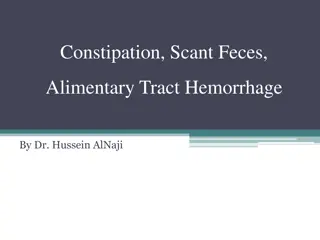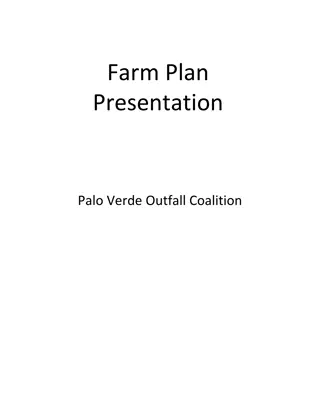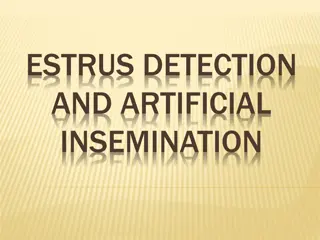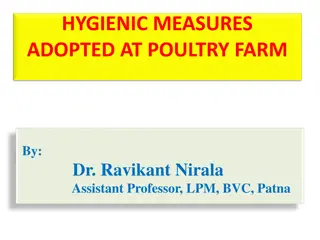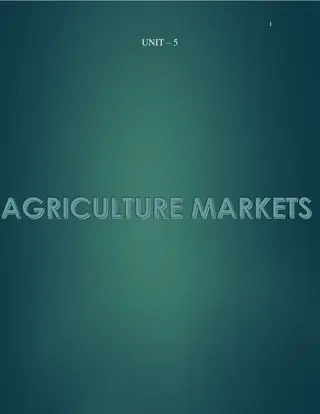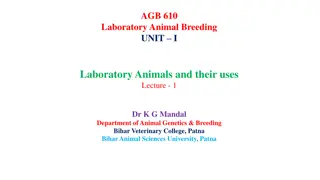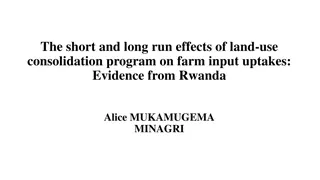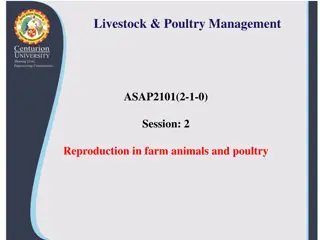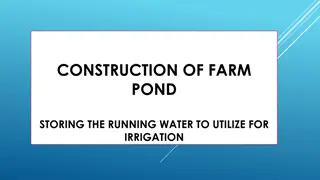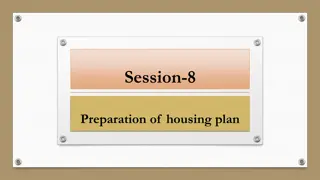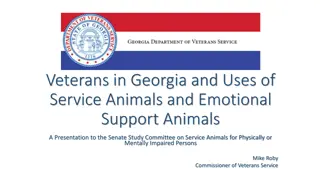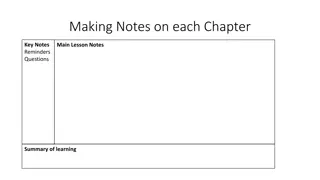
Understanding Estrous Cycle in Farm Animals
Learn about the phases of the estrous cycle in farm animals - from proestrus to metestrus and everything in between. Discover the changes in behavior and physiology that occur during each stage.
Download Presentation

Please find below an Image/Link to download the presentation.
The content on the website is provided AS IS for your information and personal use only. It may not be sold, licensed, or shared on other websites without obtaining consent from the author. If you encounter any issues during the download, it is possible that the publisher has removed the file from their server.
You are allowed to download the files provided on this website for personal or commercial use, subject to the condition that they are used lawfully. All files are the property of their respective owners.
The content on the website is provided AS IS for your information and personal use only. It may not be sold, licensed, or shared on other websites without obtaining consent from the author.
E N D
Presentation Transcript
Estrous Cycle in Farm Animals Dr Bhavna Assistant Professor cum Junior Scientist Deptt. of Veterinary Gynaecology and Obstetrics
Rhythmic sexual behavior patterns develops in female animals on attainment of puberty. This behavior change i.e. sexual receptivity is called estrus, a Greek term which means mad- desire. The combination of physiological events which begin at one estrus period and end at the next is termed as estrous cycle. Day of estrus is considered as day zero of the cycle.
Estrous cycle Follicular phase Luteal phase Proestrus Metestrus Estrus Diestrus
Proestrus Immediately precedes estrus phase. Characterized by follicular growth, regression of CL and increased production of estrogen. Estrogen increases blood supply of genital tract, thus, produces edema of genitalia. Uterus enlarges very slightly, endometrium becomes congested and oedematous, increased glandular secretory activity.
Vaginal mucosa becomes hyperaemic. In bitches, number of cell layers in epithelium increase and superficial cornified. layers becomes Also, vulval edema, hyperaemia and proestrual bleeding.
Estrus Period of acceptance of male. Onset and end are defined and can be accurately measured, thus, used as reference points for determining the cycle length. The uterine, cervical and vaginal glands secrete increased amounts of mucus; the vaginal epithelium and endometrium become hyperaemic and congested; the cervix is relaxed.
Ovulation occurs in all species except in cows (12 hours after end of estrus). Behavioural signs of estrus: Restlessness Loss of appetite Bellowing Frequent micturition Mounting behaviour (Standing heat) Decreased milk production Mucus discharge (clear, stringy)
Metestrus Follows cessation of estrus. Granulosa cells of ovulated follicle give rise to lutein cells. Formation of corpus luteum. Scanty discharge, blood tinged (Metestrual bleeding). If fertilization occurs, mucus secretion from uterine glands increases.
Diestrus Phase of CL and progesterone dominance. Development of mammary gland and uterine myometrium. Uterine glands produce thick, viscid fluid (uterine milk) for nourishing zygote. CL regresses after 15-16 days, if fertilization fails.
Anestrus Prolonged period of sexual rest, genital tract quiescence. Minimal follicular development. CL regressed and non-functional. Scanty and tenacious secretions. Constricted cervix and pale vaginal mucosa.
Estrus- cycle, estrus and time of ovulation in some of the domestic animals Species Length of Duration of Time of ovulation Estrous Cycle Estrus (days) 21-22 18-19 hrs 10-11 hours after the end of Cow estrus 1-2 days before the end of 19-25 4-8 hrs Mare estrus 24-30 16-17 24-36 hrs hours from the Ewe beginning of estrus 30-36 21 32-40 hrs hours from the Goat beginning of estrus 35-45 19-20 48-72 hrs hours from the Sow beginning of estrus 1-2 days after onset of estrus Size dependent 7-9 days Bitch Queen 16 5-6 days Induced 14-36 hours after coitus
Proestrus Anestrus Estrus Diestrus Pseudo pregnancy Met estrus Pregnancy

